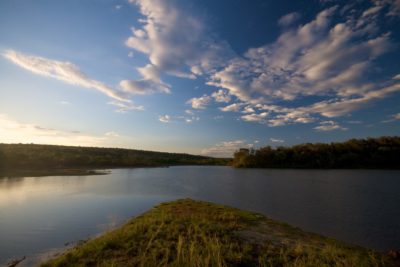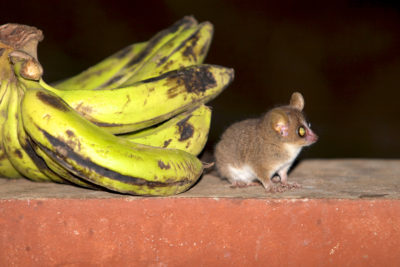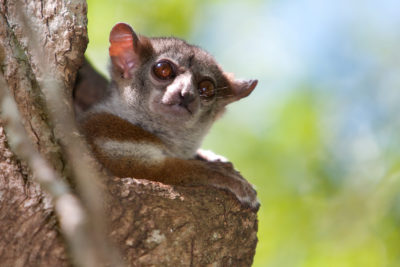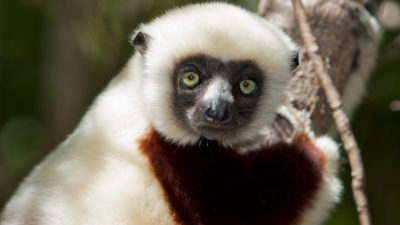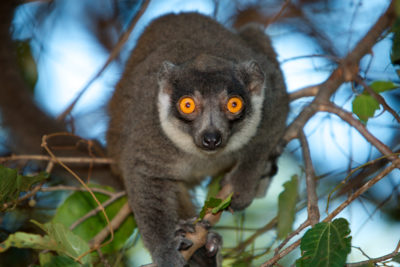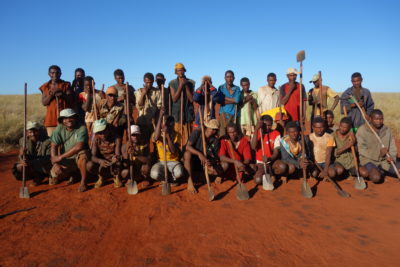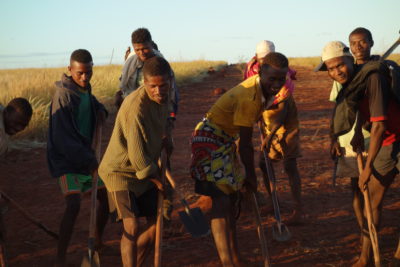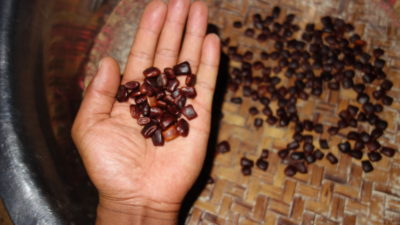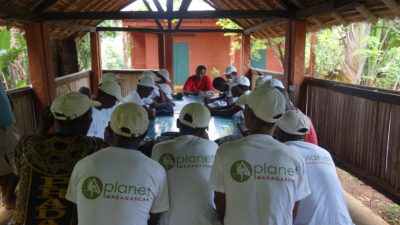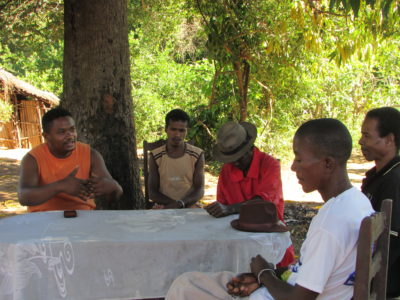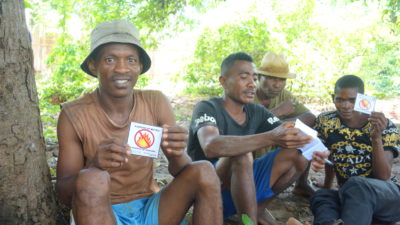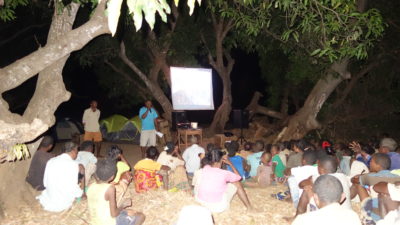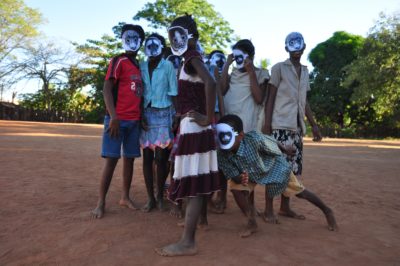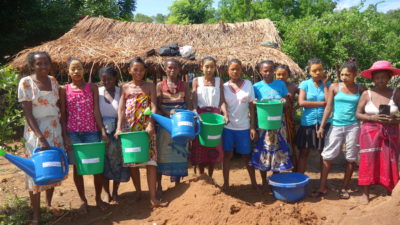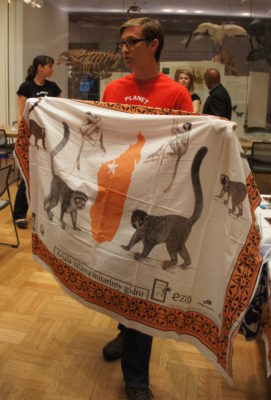
Tell us a little bit about the history of Planet Madagascar.
Formed in 2015, Planet Madagascar is a Canadian non-profit that works with a local implementing partner in Madagascar (Planet Madagascar Association) to conserve lemurs and their habitat, and to improve the livelihoods of the people that live in connection to lemurs.
Planet Madagascar was born out of witnessing the tragedy of a young girl dying from what appeared to be a preventable and treatable illness when our founding director, Travis Steffens, was conducting lemur research for a PhD project in Ankarafantsika National Park, North West Madagascar. In that moment, Travis realized that the success of any future efforts to learn about and conserve lemurs required equal or greater efforts toward solving the issues facing the communities that live in connection to lemurs.
We take a holistic approach to conservation and are very much driven by the needs and interests of the community members we work with.
Where is Planet Madagascar located?
Planet Madagascar works closely with several communities in Ankarafantsika National Park, North West Madagascar. Ankarafantsika National park consists of a dry deciduous forest and one of the last large protected western primary forests in northwestern Madagascar.
Although Ankarafantsika is a protected national park, forest loss persists, mainly due to fires, logging for charcoal production or construction, slash-and-burn agriculture, domestic livestock grazing, and root gathering (Kun-Rodrigues et al. 2013).
Our main area of focus is with three communities approximately 12 km from the Ankarafantsika National Park offices. In these communities, we have conducted livelihoods surveys that help us to understand the needs and wants of the community, which has helped inform our conservation actions.
Based on the results of our livelihoods surveys, we began a conservation education program, a continual forest monitoring and fire management program, a forest restoration program, and a sustainable agroforestry initiative.
We have recently expanded and introduced conservation education in nearly 20 communities around the national park.
Which lemur species do you work with?
We work to protect habitat for the eight species of lemurs found in Ankarafantsika National Park, including five species classified as endangered by the IUCN Redlist. The species include the Coquerel’s sifaka (Propithecus coquereli), the common brown lemur (Eulemur fulvus), the mongoose lemur (Eulemur mongoz), the Milne Edwards sportive lemur (Lepilemur edwardsi), the western wooly lemur (Avahi occidentalis), the fat-tailed dwarf lemur (Cheirgaleus medius), the golden-brown mouse lemur (Microcebus ravelobensis), and the gray mouse lemur (Microcebus murinus).
Each species plays a valuable role in the ecosystem and has unique needs. We strive to match our conservation efforts with the results of conservation research focused on these species.
How does Planet Madagascar help lemur conservation?
Planet Madagascar’s programs are centered around conservation, community, and education. We work closely with local communities to improve the lives of people that live in Madagascar and conserve lemurs and their habitat.
Conservation
Our flagship conservation initiative called Salama Atiala, which means “healthy forest” in Malagasy, began in 2015 and includes an ongoing fire management program and forest restoration initiative.
We employ local community members to protect and monitor the forest with fire breaks and monitoring techniques, and to restore fragmented landscapes by managing tree nurseries and planting seedlings. Community members benefit through a salary-based program, thereby providing them with much-needed revenue.
Community
Our approach to conservation is community-focused and so depends on understanding the issues facing the community residents. For each and every project that we do, we work closely with communities at the outset (though formal surveys and casual meetings) to understand how community members perceive forest and lemur conservation to better inform our conservation programs.
Education
All of our projects incorporate an education component because we believe that conservation education is critical to the success of our programs. For example, we have provided training programs for local adults on how to implement conservation education programs for the children. As well, each year, we hold an annual “responsible fire education day” in the communities in Ankarafantsika to educate how to burn responsibly. Finally, and most recently, we have partnered with Chris Scarffe, an Emmy nominated, independent filmmaker, to create an educational film to add to our toolkit. The film is in Malagasy language, with a Malagasy host, and screened for a Malagasy audience. The film explores key threats to lemurs in their communities, and highlights how they, along with Planet Madagascar, have been working to alleviate these threats.
What are some of Planet Madagascar recent achievements?
We have had a variety of successes but the most recent is that we have helped create a women’s cooperative that is focused on sustainable agroforestry and forest restoration. This cooperative now provides seeds for our forest restoration initiative.
However, the main success here is that the women are piloting an innovative approach to agriculture called dynamic agroforestry. This approach aims to align more with natural processes of forest to produce higher crop yields and biodiversity. If the pilot is successful we aim to expand to throughout the park.
What are some goals and expectations Planet Madagascar has for the future?
Our goal is ultimately to create sustainable forest communities. We want people that live in forested communities to have agency over their own lives while lemurs and their habitat continue to be protected.
This means that we will need to bring sustainable water, sanitation, education, and health solutions to the communities while continuing to protect lemurs and their habitat. Although our focus is on people, lemurs, and forests, the side benefit is that protecting forests will provide habitat for many other endemic and endangered species in Ankarafantsika National Park. The reality is that our goal will take decades to accomplish, but we expect to have many measurable outcomes along the way.
Do you have volunteer opportunities at Planet Madagascar?
We are always interested in volunteer support, especially from passionate self-starters who can bring new ideas and initiatives to the table. Because we are a small organization, we ask our volunteers to approach us with their ideas and interests for how they can help and the time commitment they are prepared to make.
In the past, we have had volunteers help us at our education events in Canada, leverage their expertise to help us design and critique our programs, and provide support in fundraising campaigns.
What do you need donations for right now?
Right now, we need donations:
- to help augment the costs of our expanding fire management and forest restoration initiatives, and
- to grow our sustainable dynamic agroforestry project.

